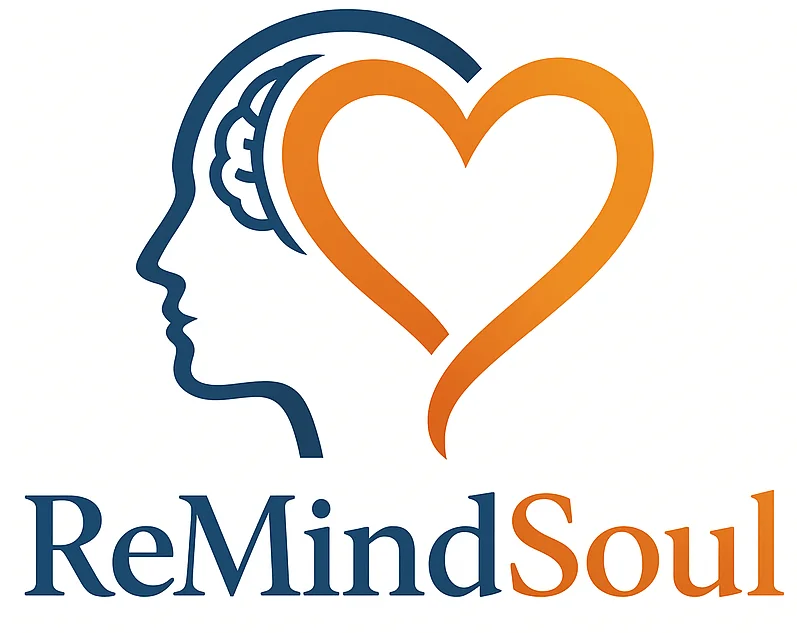Overcoming Trauma: The Ultimate Easy Self-Help Guide for Mind, Body, and Soul
💔😢
Discover a holistic path to overcoming trauma. Learn how to heal your mind, body, heart, and soul through awareness, compassion, and self-guided recovery.
You are stepping into a process that belongs entirely to you. You may have experienced something deeply unsettling, painful, or confusing. Perhaps you still carry echoes of that event in your mind, your body, your spirit, and your heart.
This guide is written for you — to empower you to participate in your own healing, at your own pace, in your own space, from home.

It honors the fact that healing is nonlinear, that mind, body, soul, and heart all respond in their own ways, and that you hold the capacity to restore, reclaim, and reconnect your whole self.
No one else can walk this path for you, but you do not have to walk it alone. Within these pages, you will find companionship in understanding, in practical wisdom, and in the shared human experience of rising after falling.
“Trauma does not define you. It is something that happened to you, not something that is you.”
Overview
In this journey of overcoming trauma, you will learn how small, intentional steps can help you create safety, clarity, and meaning from within. Healing does not mean forgetting or erasing what happened; rather, it means building a new relationship with your experience, yourself, and your world.
You will discover how to assess where you are, set gentle goals, and use integrative self-help practices drawn from psychology, somatic awareness, spiritual remembrance, and mindful living. You will explore your healing across four domains: Mind, Body, Soul, and Heart.
This guide invites you to become an active participant in your restoration. You will learn to:
- Recognize patterns that no longer serve you
- Interrupt cycles of reactivity
- Cultivate new ways of being that honor both your pain and your resilience
→ Healing Journey: Participate actively, honor your pain, and reclaim your whole self.
Understanding Trauma
What is Trauma?
Trauma is an experience, or series of experiences, that overwhelm your ability to cope, leaving you feeling unsafe, disoriented, disconnected, or shattered.
It may result from a single dramatic event, such as an accident, abuse, or loss, or from repeated stressors, including neglect, ongoing conflict, or emotional harm.
The result is that your mind, body, and soul register the event as still active, even when the danger has passed. Trauma responses are not character flaws. They are intelligent adaptations your system created to help you survive.
- Hypervigilance that exhausts you now once kept you alert to danger
- Emotional numbness that frustrates you once protected you from unbearable pain
- Avoidance that isolates you once gave necessary distance from what you could not yet process
These responses served you. Now, as you heal, you are learning when they are no longer needed and how to update your system with new information: you are safe now, you are here now, you can choose differently now.
Why it Happen?
When an experience triggers your survival systems—fight, flight, or freeze—and you cannot fully process it, energy remains stuck.
- The memory of the event can become embedded in your nervous system, body tissues, and subconscious life
- You might not consciously remember everything, yet your body or emotions still respond as if the threat is current
Your nervous system responds to threat automatically. In a traumatic situation, your body mobilizes massive energy to survive. Ideally, once the threat resolves, energy discharges naturally through shaking, crying, moving, or other forms of release. If the threat was inescapable, suppressed, or incomplete, this activation can remain locked in your system.
Self-Assessment
Reflect on your current state across four domains:
- Mind: How often do you feel anxious, distracted, or disconnected from thought or memory?
- Body: Do you experience tension, unexplained pain, fatigue, changes in appetite, or sleep problems?
- Soul: Do you feel disconnected from meaning, purpose, or something greater than yourself?
- Heart: How are your relationships, your longings, your capacity to love, to feel safe, to give and receive affection?
Write brief notes. No judgment. Just observe.
Improving Emotional Awareness
As you write your notes, notice what feelings arise. Do you feel shame about what you discover? Sadness? Relief at finally naming what has been happening? All of these are understandable responses. Try to hold them gently, without pushing them away or getting lost in them.
Notice how your mind, body, and soul interact when you feel stress or imbalance. This awareness is an essential step in overcoming trauma.
- Perhaps you feel your chest tighten (body) when a fearful memory pops up (mind).
- Perhaps you withdraw emotionally (heart) and then feel numb (body).
This interplay is key. Trauma is not only in your mind—it is in your whole being.
Begin to track these patterns without trying to change them immediately. Simply observe:
- “When I think about X, my shoulders rise and my breathing becomes shallow.”
- “When I feel disconnected from purpose, I also notice I avoid my friends and eat mechanically without tasting my food.”
These observations reveal the pathways through which trauma moves in your system. Paying attention to them is a gentle but powerful practice in overcoming trauma.
→ Awareness Practice: Observe your patterns across mind, body, soul, and heart to map how trauma lives in your system
Emotional Healing — Home Methods — Body Mind Soul
This approach works because trauma is not only about the mind. It is held in the body, in the soul, in your relationships, and in your boundaries. When you support all those layers, you can shift from mere survival to thriving.
Research shows integrative practices, such as somatic movement, mindfulness, and spiritual integration, help restore the nervous system and connect mind-body-spirit.
The reason holistic healing is so powerful is that trauma fragments you. It splits mind from body, self from spirit, and you from others. Integrative practices help you become whole again. They honor the truth that you are not just a thinking being, not just a physical being, and not just a spiritual being, but all of these simultaneously and inseparably—an essential insight for anyone overcoming trauma.

Mind – Emotional and Mental Healing

Mental Trauma Signs
- Difficulty trusting others
- Disrupted sleep patterns
- Hyper-arousal
- Distorted sense of self-worth
- Fear of intimacy
- Blurred boundaries
Calm and stillness can come through prayer and remembrance.
Example
I used to wake at 3am with my heart racing, worried someone would betray me just by breathing next to me. One morning I sat up, placed a hand on my chest, and whispered: ‘I am safe now. I breathe now. I did that for a minute, then I got out of bed and wrote:
‘Trust: today I let someone open the door of my heart gently. That small act, repeated nightly, became part of my practice of overcoming trauma, helping me shift from hyper-vigilance to calm.’
Mental Trauma Healing Approaches
- Trust in God restores safe trust and emotional security
- Truthfulness and integrity rebuild authentic connections
- Mindful awareness of God grounds fear into conscious calm
- Setting healthy limits restores dignity and self-respect
“I see you, but I am not you.”
Healing Methods (Home-based) Mind Trauma
- Mindfulness meditation: Sit comfortably, close your eyes, and focus on your breath. Notice thoughts without judgment. Start 5 minutes daily and gradually increase.
- EFT tapping: Tap meridian points while acknowledging anxious thoughts and affirming self-acceptance. Repeat 3–5 times.
- Journaling: Spend 10–15 minutes daily writing about feelings, experiences, and triggers. Note body responses and patterns.
- Gentle yoga: Begin with child’s pose, cat-cow, or seated forward folds. Move slowly, breathe deeply, and focus on sensations.
- Spiritual prayers: Speak aloud or silently with full presence. Allow yourself to feel the words, inviting grace and comfort.
→ Healing Practice: Use these integrative methods consistently to restore mind-body-spirit connection and cultivate emotional resilience.
Body – Physical and Behavioral Healing

Physical and Behavioral Trauma Signs
- Digestive issues
- Chronic tension
- Unexpected pain
- Emotional numbness or withdrawal
- Fatigue
- Startle response
- Restlessness
Physical-spiritual rhythm, calm and stillness through prayer and remembrance, and gratitude awaken sensitivity to life’s beauty. Nurturing safe, affectionate bonds supports recovery.
Example
My stomach had been tied in knots each afternoon, and no medication seemed to calm it. One quiet evening I lay on my back, feet flat, and said: ‘In Your name I release my tension.’ As I opened my ribs on the inhale, I imagined the tightness melting.
I then stood, hugged my knees, and said: ‘I feel alive.’ A week later the tightness had eased. I remembered: My body is not just broken, it is healing—a vital step in overcoming trauma..
Physical and Behavioral Healing Trauma in the Body
- Eat what is wholesome, mindfully
- Practice physical-spiritual rhythm to release tension
- Cultivate calm and stillness through prayer and remembrance
- Express gratitude to awaken sensitivity to beauty
- Nurture safe and affectionate bonds
Healing Methods (Home-Based) Body Trauma
- Yoga: Trauma-sensitive poses that emphasize grounding and choice. Try mountain pose, warrior poses, or restorative poses with props. Move at your own pace.
- **Energy healing or self-holding: Place hands gently on areas of tension, breathe slowly, and imagine warm healing energy flowing. Hold for 2–5 minutes.
- Breathwork: Box breathing (inhale 4 counts, hold 4, exhale 4, hold 4) or 4-7-8 breathing. The extended exhale signals safety to your body.
- Restful journaling: Lie down and scan your body from toes to head. Write what you notice without judgment.
** Energy Healing: Energy healing is a holistic and complementary approach that focuses on balancing and manipulating the subtle energy fields believed to exist within and around the body. Rooted in various ancient traditions, it operates on the premise that physical and emotional ailments are often connected to disruptions, blockages, or imbalances in this vital energy (often referred to as qi, prana, or life force). Techniques such as Reiki, Therapeutic Touch, or simply placing hands gently on the body aim to clear these blockages, restore the natural flow of energy, and thus support the body’s innate ability to self-heal and achieve deep relaxation.
→ Healing Practice: Reconnect with your body, track sensations, and use movement, breath, and mindful attention to restore physical and behavioral balance.
Heart – Relational and Emotional Healing
Trauma often happens in relationship—through betrayal, abandonment, abuse, or violation. Even when the traumatic event itself was impersonal, such as an accident or natural disaster, the aftermath often involves relational wounds when others do not understand, minimize your pain, or fail to show up in the ways you needed.

Signs of Emotional Trauma in Adults
- Fear of intimacy
- Difficulty trusting others
- Blurred boundaries
- Emotional numbness
- Avoiding connection
Compassion and divine love heal relational wounds. Nurturing safe, affectionate bonds and taking responsibility for self and others helps reclaim self-respect.
Example
I withdrew from friends because I thought I would always be the one left behind. One afternoon I texted an old friend: ‘Can I come by for tea tomorrow? I have missed you.’ When I arrived, I said honestly:
‘I sometimes fear you will leave me. I prefer to say it than hide it.’ She reached across the table and squeezed my hand. In that moment I realized my voice mattered, I was worthy of being heard, and I was taking a meaningful step in overcoming trauma.
Healing From Traumatic Relationship (Home-Based)
- Journaling: Explore your feelings about specific people or relationships. Write letters you may never send, list qualities you need in friendships, or describe moments when you felt truly seen.
- EFT tapping: Reduce fear of rejection. Speak your fear aloud, “Even though I’m afraid of being rejected, I deeply accept myself.” Shift to positive affirmations: “I am worthy of love and belonging.”
- Loving-kindness meditation or prayer: Repeat phrases like “May I be safe, may I be peaceful, may I be loved,” then extend these wishes to others, starting with safe people.
- Gentle heart-opening yoga postures: Practice poses like cobra, camel (modified), or supported bridge. Move slowly and breathe deeply, imagining your heart space opening.
- Spiritual prayers: Pray for healing relationships, guidance in trust, and courage in vulnerability, and wisdom in discernment. Release resentment and invite peace.
→ Healing Practice: Use journaling, gentle movement, meditation, and prayer to restore relational safety, nurture trust, and open your heart to yourself and others.
Soul – Spiritual and Meaningful Healing
Trauma can shatter your sense of meaning. You may find yourself asking: Why did this happen? Why me? What is the point of anything if terrible things can occur? These are not just intellectual questions—they are soul questions, arising from a deep place of existential disruption.
Some people lose faith entirely after trauma. Others find their faith tested but ultimately deepened. There is no single right way to navigate the spiritual dimensions of healing. What matters is that you give yourself permission to explore, to question, to doubt, to rage, to surrender—whatever your soul needs in order to find its way back to ground.

Soul Trauma Signs and Symptoms
- Disconnection from purpose
- Feeling that life is meaningless
- Loss of spiritual connection
- Emptiness
Example
I asked myself: Why did I survive? I lay on the doorstep of dawn and whispered: ‘O God, show me the meaning in this wound.’ I heard a soft suggestion: ‘So you can help another.’ I sat up slowly and tears came—not of sorrow but of purpose. That day I started to volunteer an hour a week. My soul felt awake again.
Soul – Spiritual and Meaningful Healing Trauma in the Body
- Energy meditation or prayer: Visualize healing light or divine presence entering through your crown, flowing through your body, and anchoring into the earth. Breathe rhythmically and feel held by something greater than yourself.
- Journaling about meaning and purpose: Explore questions like “What wants to emerge from my life now?” or “How might my experience help others?” Let answers unfold naturally.
- Gentle yoga with breath awareness: Synchronize slow movements with breath. Each movement becomes a meditation, each breath a prayer. Focus on unity of body, breath, and spirit.
- Reflection walks in nature: Walk slowly, noticing trees, sky, and earth beneath your feet. Observe cycles of growth and decay. Let nature remind you of your capacity for renewal and connection to all living things.
- Spiritual prayers: Pray for understanding, peace with what you cannot change, strength to continue healing. Ask to see the sacred within your suffering and feel divine presence in your loneliness.
→ Healing Practice: Use daily remembrance, mindful movement, journaling, nature walks, and prayer to restore spiritual connection, meaning, and purpose after trauma.
Your Daily Healing Plan Traumatic
This simple, self-paced plan can be followed at home. It is designed to fit into your everyday life and adapt when things feel hard.
Morning (5–15 minutes)
- Grounding breath: Sit or stand. Breathe in 4 counts, hold 1, and breathe out 6. Repeat 3–5 times.
- Remembrance: Use your spiritual phrase for 1–2 minutes.
- Body check-in: Scan your body quickly. Note tension, pain, or numbness. Breathe into it.
Healing Insight: The extended exhale activates your parasympathetic nervous system, signaling safety. The body scan identifies tension early, allowing gentle release before it accumulates.
Midday (Optional)
- Pause and notice: Observe your mental and physical state.
- Movement: Stretch shoulders, neck, and spine; walk slowly for 3–5 minutes.
- Gratitude: Write down one small thing you appreciate.
Healing Insight: The midday pause reconnects you to yourself. Movement relieves stiffness and supports circulation. Gratitude practice rewires attention toward positive experiences.
Evening (10–20 minutes)
- Reflection: Journal triggers, responses, and observations.
- Heart connection: Send a message, call someone, or show kindness to yourself or others.
- Body release: Lie down, feet flat, arms by your side. Breathe deeply for two minutes, imagining tension leaving your body.
- Safe sleep ritual: Set intention: “I release now. I rest now. I trust now.”
Adaptations for Hard Days
Healing is not linear. Some days you will feel capable and motivated. Other days you may barely function. Both are part of the process. The key is to have adaptations ready so you can still show up for yourself in small ways, even on the hardest days.
When You Feel Overwhelmed
- Reduce to one conscious breath
- Repeat one phrase of remembrance
One breath, one phrase, keeps the thread of connection alive. Tiny acts of self-care build resilience and self-trust.
When You Feel Numb or Stuck
- Choose movement or connection instead of meditation
- Take a brisk walk, make a phone call, or engage in simple action
These small acts shift stagnant energy and help you feel present and alive.
When You Are Triggered or Reliving
- Practice grounding: feet on floor, name five things you can see, four you can hear
- Gently return to your practice or rest when safe
Final Reflection
Healing is a spiral, not a straight line. Breakthroughs and setbacks are normal. Consistently showing up with gentleness and patience matters more than perfection.
“The body remembers, but so does the soul, and both can heal when met with love, patience, and presence.”
Trust yourself. Trust the process. Healing is possible. You are worthy, capable, and already on the path to wholeness.
→ Healing Practice: Use small, adaptable actions to maintain connection, presence, and care for yourself on difficult days
Disclaimer: This guide, authored by ReMindSoul, an integrative mental health initiative focused on holistic emotional healing across the mind, body, and soul, is provided for informational and educational purposes only.
